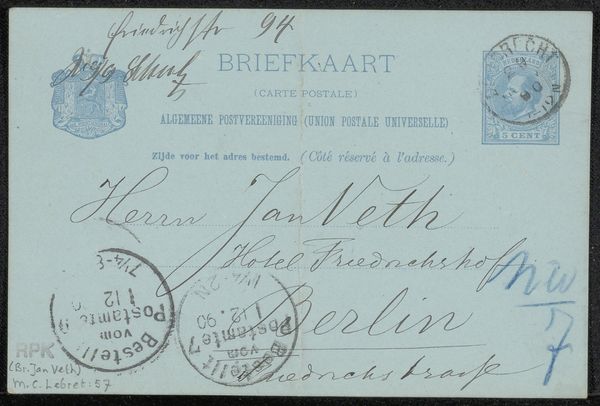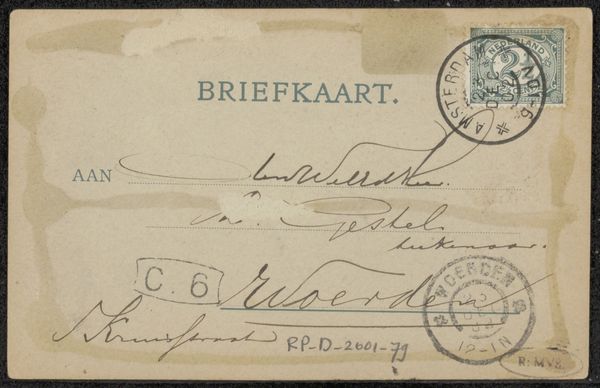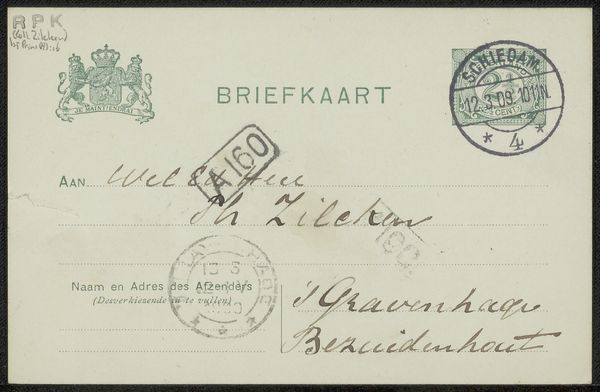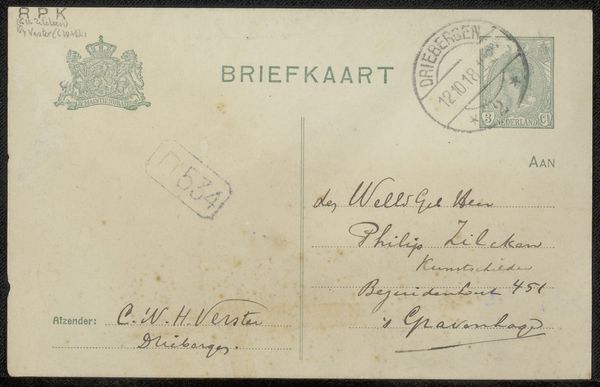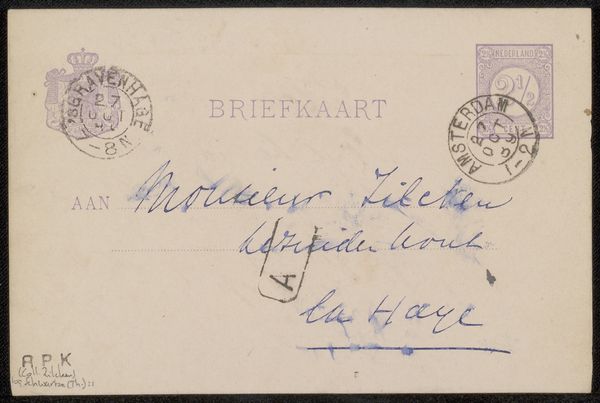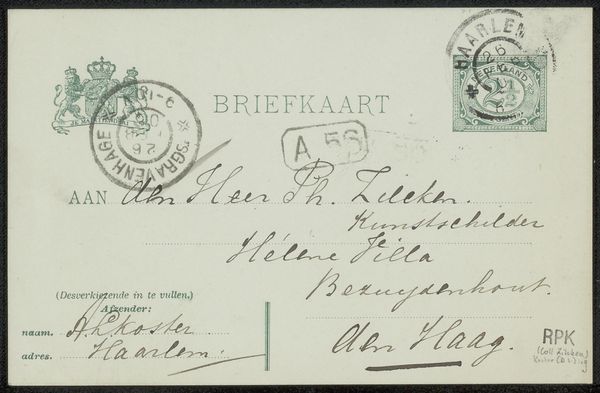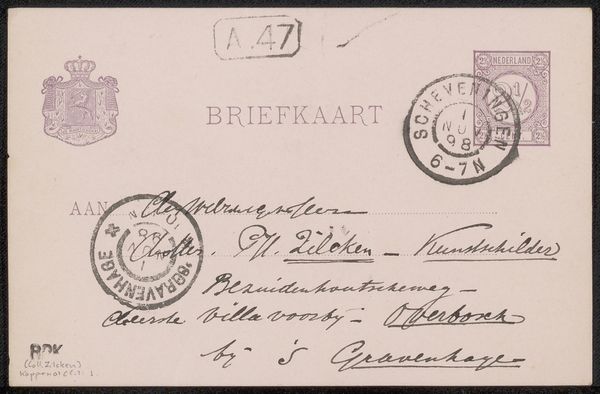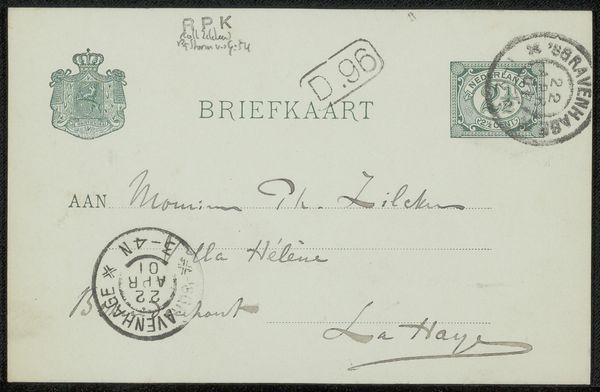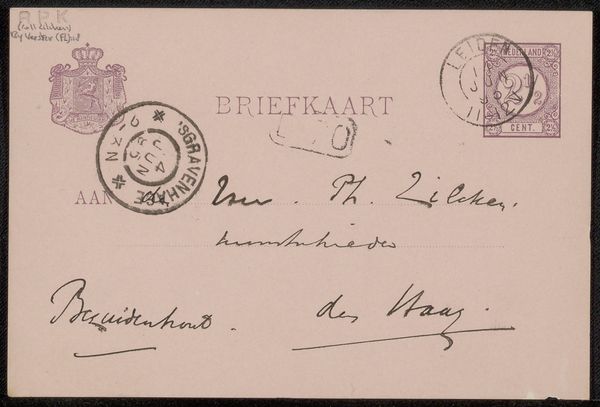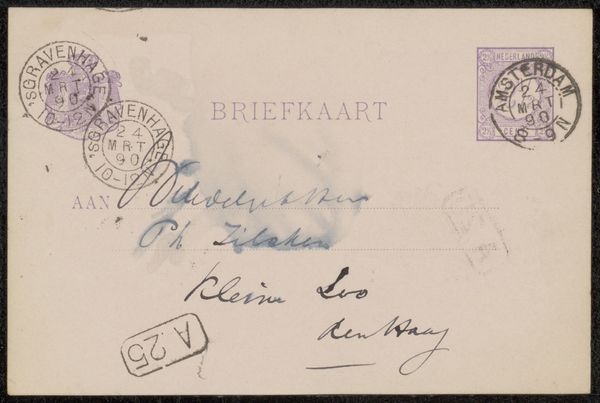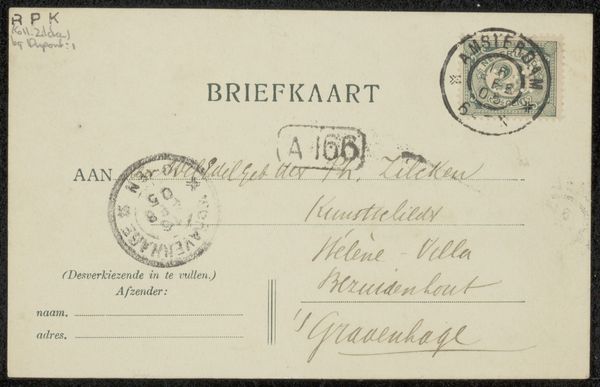
drawing, paper, ink, pen
#
drawing
#
pen sketch
#
paper
#
ink
#
pen
#
post-impressionism
Copyright: Rijks Museum: Open Domain
Editor: So, here we have “Briefkaart aan Philip Zilcken”– a postcard to Philip Zilcken –made before 1890 by Marinus van der Maarel, rendered with pen and ink on paper. I’m struck by how much we can learn about a person just from their correspondence. What do you make of this artifact? Curator: It's fascinating how something as utilitarian as a postcard can become a potent symbol. Consider what this card represents: connection, communication, even intimacy across distance. But notice the specific visual elements. Do the stamps and postal markings remind you of anything? Editor: They remind me of the bureaucracy of communication, almost like barriers to that connection you mentioned. Curator: Precisely. They also echo cultural identities; the postal symbols can represent the sender’s association with broader communities and empires, which served to both connect and divide. Do you think this postcard presents communication as intimate and simple, or does the artist communicate some measure of cultural and societal burden through the inclusion of official imagery? Editor: That's an interesting point, perhaps both? It hints at the effort required to maintain even a brief exchange. And, I didn't notice this before, the handwriting adds a personal element that’s almost immediately offset by the formal postal markings. Curator: Yes, and even handwriting, especially in this period, becomes a symbol of social class, education, personal aesthetic choices, even regional background. It becomes loaded with social cues and values. Editor: I never considered how even everyday mail could reveal so much about connection, identity and context! Thanks! Curator: Indeed. The weight of historical symbols even rests on these seemingly ephemeral scraps of paper.
Comments
No comments
Be the first to comment and join the conversation on the ultimate creative platform.

